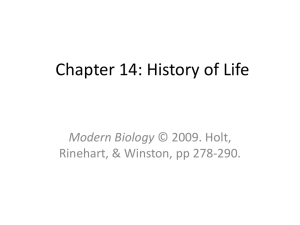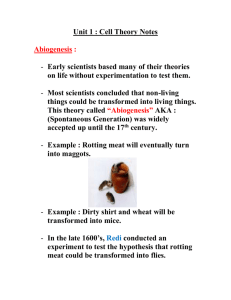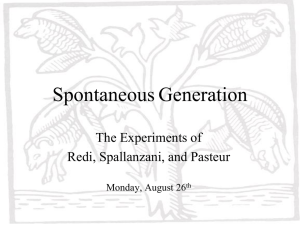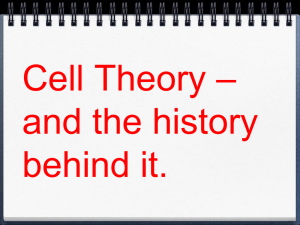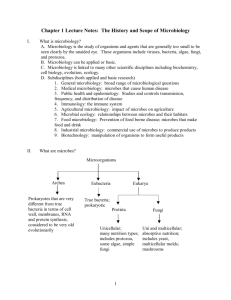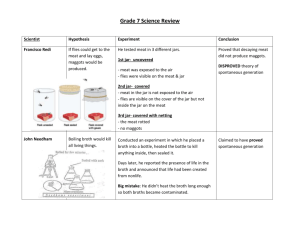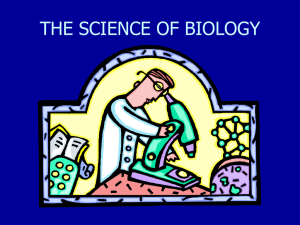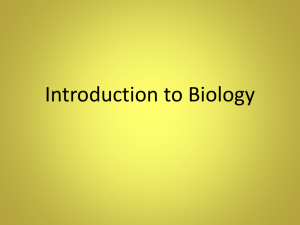Answers ch00
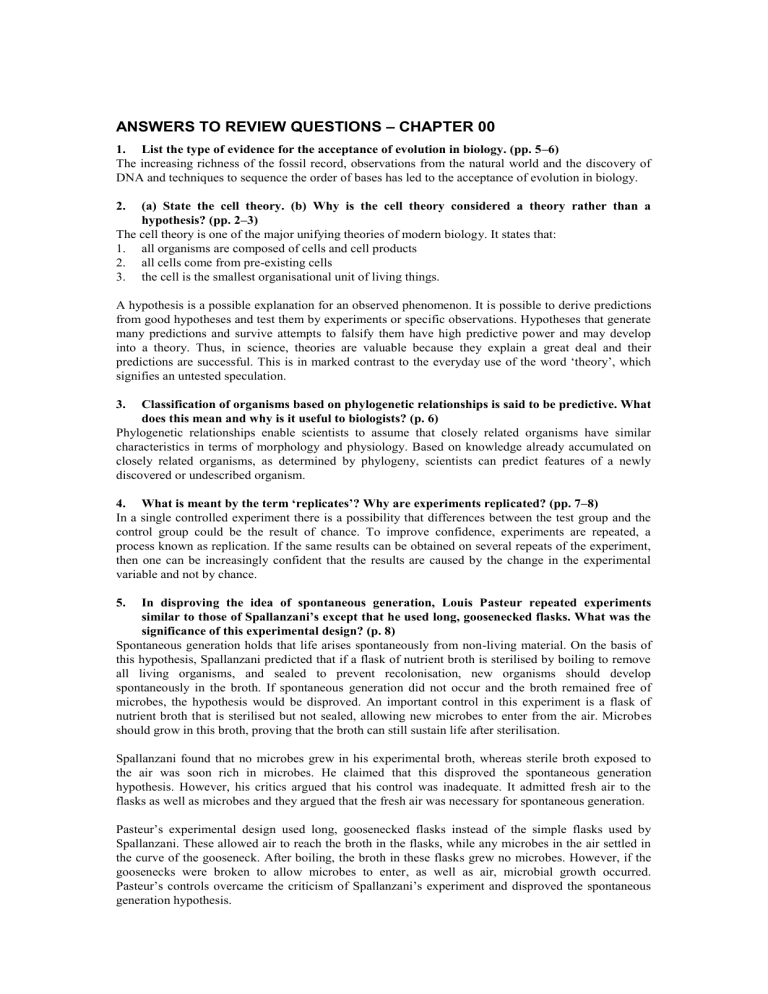
ANSWERS TO REVIEW QUESTIONS
– CHAPTER 00
1. List the type of evidence for the acceptance of evolution in biology. (pp. 5–6)
The increasing richness of the fossil record, observations from the natural world and the discovery of
DNA and techniques to sequence the order of bases has led to the acceptance of evolution in biology.
2. (a) State the cell theory. (b) Why is the cell theory considered a theory rather than a hypothesis? (pp. 2–3)
The cell theory is one of the major unifying theories of modern biology. It states that:
1. all organisms are composed of cells and cell products
2. all cells come from pre-existing cells
3. the cell is the smallest organisational unit of living things.
A hypothesis is a possible explanation for an observed phenomenon. It is possible to derive predictions from good hypotheses and test them by experiments or specific observations. Hypotheses that generate many predictions and survive attempts to falsify them have high predictive power and may develop into a theory. Thus, in science, theories are valuable because they explain a great deal and their predictions are successful. This is in marked contrast to the everyday use of the word ‘theory’, which signifies an untested speculation.
3. Classification of organisms based on phylogenetic relationships is said to be predictive. What does this mean and why is it useful to biologists? (p. 6)
Phylogenetic relationships enable scientists to assume that closely related organisms have similar characteristics in terms of morphology and physiology. Based on knowledge already accumulated on closely related organisms, as determined by phylogeny, scientists can predict features of a newly discovered or undescribed organism.
4. What is meant by the term ‘replicates’? Why are experiments replicated? (pp. 7–8)
In a single controlled experiment there is a possibility that differences between the test group and the control group could be the result of chance. To improve confidence, experiments are repeated, a process known as replication. If the same results can be obtained on several repeats of the experiment, then one can be increasingly confident that the results are caused by the change in the experimental variable and not by chance.
5. In disproving the idea of spontaneous generation, Louis Pasteur repeated experiments similar to those of Spallanzani’s except that he used long, goosenecked flasks. What was the significance of this experimental design? (p. 8)
Spontaneous generation holds that life arises spontaneously from non-living material. On the basis of this hypothesis, Spallanzani predicted that if a flask of nutrient broth is sterilised by boiling to remove all living organisms, and sealed to prevent recolonisation, new organisms should develop spontaneously in the broth. If spontaneous generation did not occur and the broth remained free of microbes, the hypothesis would be disproved. An important control in this experiment is a flask of nutrient broth that is sterilised but not sealed, allowing new microbes to enter from the air. Microbes should grow in this broth, proving that the broth can still sustain life after sterilisation.
Spallanzani found that no microbes grew in his experimental broth, whereas sterile broth exposed to the air was soon rich in microbes. He claimed that this disproved the spontaneous generation hypothesis. However, his critics argued that his control was inadequate. It admitted fresh air to the flasks as well as microbes and they argued that the fresh air was necessary for spontaneous generation.
Pasteur’s experimental design used long, goosenecked flasks instead of the simple flasks used by
Spallanzani. These allowed air to reach the broth in the flasks, while any microbes in the air settled in the curve of the gooseneck. After boiling, the broth in these flasks grew no microbes. However, if the goosenecks were broken to allow microbes to enter, as well as air, microbial growth occurred.
Pasteur’s controls overcame the criticism of Spallanzani’s experiment and disproved the spontaneous generation hypothesis.
